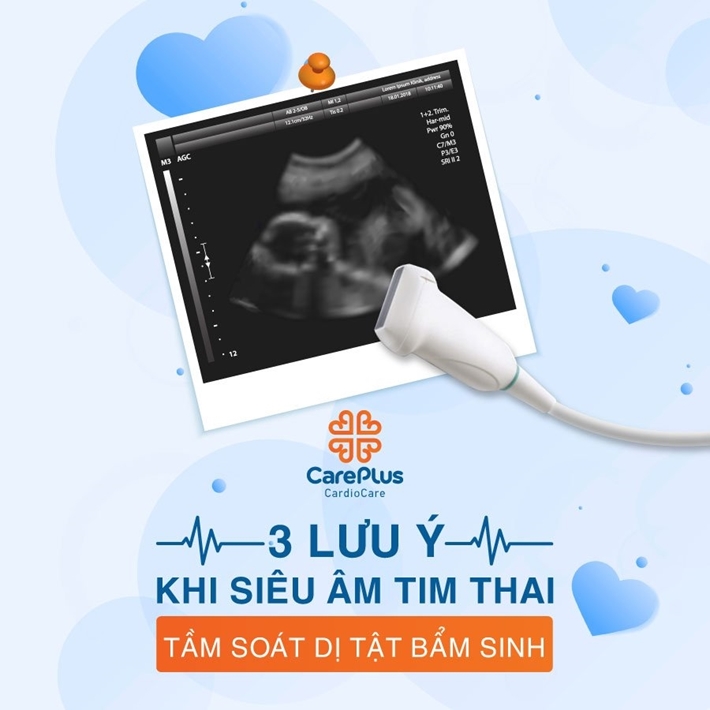Full fetal echocardiography, always reported normal fetal heart, why is the baby still born with congenital heart?
It is a fairly common case today, causing a lot of confusion for young parents, making it difficult for many families to give birth to a child with a congenital heart defect, reducing the baby's quality of life, like the whole family.

6/28/2021 11:06:10 PM
Dr. Phung Ngoc Minh Tan, Cardiology Department of CarePlus International Clinic System, explained the reasons for this problem as follows:
1. Normal fetal ultrasound is not a specialized method to help detect heart disease in the fetus.
Pregnancy ultrasound at about 20-22 weeks, 3D-4D ultrasound plays a role in screening for fetal morphological abnormalities. The heart was also one of the structures examined. However, not all medical facilities perform intensive fetal echocardiography to detect congenital heart disease. Sometimes, only counting four chambers of the heart, briefly about the size of the chambers, heart rate. However, some genetic heart diseases have a completely normal 4-chamber image. In these cases, intensive fetal echocardiography should be performed in a standard sequence and by a trained physician who has mastered this technique.
2. Auscultation of the fetal heart with a handheld fetal heart monitor only shows how fast and slow the heart rate is, not whether the heart structure is normal or not.
When they go to antenatal care, some pregnant women listen to the fetal heart rate and are informed that the fetal heart rate is normal. Say the new normal frequency fully and avoid misunderstanding.
3. Even with fetal echocardiography, not all heart defects are detected.
Atrial septal defects (with openings in the two small heart chambers) and ductus arteriosus may be detected only after birth. This is because the work of the fetal heart requires blood flow through these sites. After the baby is born, normally, these positions will close. If this closure does not happen, it will lead to the congenital heart diseases mentioned above.
In addition, ventricular septal defect (hole between two large heart chambers) can also be missed if the size is too small or in a too discreet location.
Congenital valvular stenosis may be more severe after the time of fetal echocardiography. At fetal echocardiography, there may be very little narrowing, not detected, but then the degree of stenosis increases until it is found that it may already be severe.
If the sequence is well followed and performed by an experienced doctor, up to 85% of heart defects can be detected.
In summary, according to personal experience from explanations and consultations, Dr Minh Tan found that, mainly, pregnant women and families misunderstand fetal morphological ultrasound always have in-depth fetal echocardiography or understand Auscultation of the fetal heart through handheld device results in a normal fetal heart rate, the cardiac structure is normal. Fetal echocardiography is an effective method to detect congenital heart diseases while the baby is still in the fetus, especially in pregnancies with a high risk of congenital heart disease.